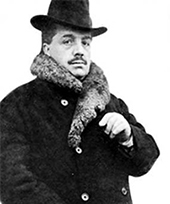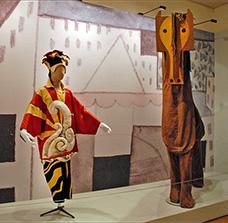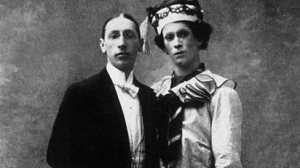Few dance companies can claim to have changed the world. Yet for the 20 years of its existence, Ballets Russes, led by the charismatic Sergei Diaghilev, did just that.
Diaghilev was an impresario in the old style. Occasionally charming, frequently tyrannical but rarely able to pay the bills, it’s little wonder that Ballets Russes was unable to outlive its founder, collapsing in financial turmoil upon Diaghilev’s death in 1929.
But although he had a touch of the snake oil salesman about him, Diaghilev’s contribution to 20th century ballet was unmatched. In evaluating his influence, therefore, one is confronted by a series of dazzling lists.
Ballets Russes boasted the greatest dancers of the time, including Vaslav Nijinsky and perhaps the greatest of them all, Anna Pavlova.
Some, like Nijinsky, started off dancing and ended up telling dancers what to do. Ballets Russes’ stable of choreographers was unique, with many of them still legends a century later: Fokine, Massine, Balanchine, and Nijinsky’s sister, Bronislava Nijinska, who created the steps for Poulenc’s Les Biches, the suite of which is performed by the APO on 24 October.
It wasn’t just the dancing; Ballets Russes immeasurably enriched the worlds of visual art and design. Coco Chanel designed costumes. So did Matisse and Miró. Picasso, competitive to his core, went one better and built the sets, too.
But what about the music? There’s the irrepressible circus of Les Biches, of course (described by its composer as “a contemporary drawing room party suffused with an atmosphere of wantonness.” Poulenc wasn’t labelled “half monk, half hooligan” for nothing). The scores written for Ballets Russes also include Ravel’s Daphnis et Chloé, Falla’s The Three-Cornered Hat, and Parade, composed by Erik Satie after an idea by Jean Cocteau and featuring Picasso’s designs.
And then there was Igor Stravinsky. The Firebird made the composer’s name in 1910 and he affirmed that promise a year later with Petrushka, which had choreography by Fokine and featured Nijinsky in the lead role. Stravinsky wrote four other pieces for Ballets Russes. Among them was Le Sacre du Printemps (The Rite of Spring), which topped the lot – and everything else the 20th century had to offer – famously causing a riot on its opening night to boot.
We trust the audience will behave with more decorum when the APO performs Le Sacre (without dancers) in November.
Watch a BBC news story showing the only known film footage of Ballets Russes:


